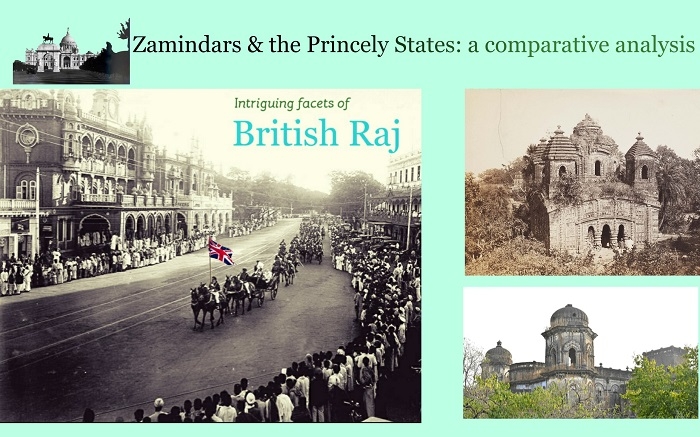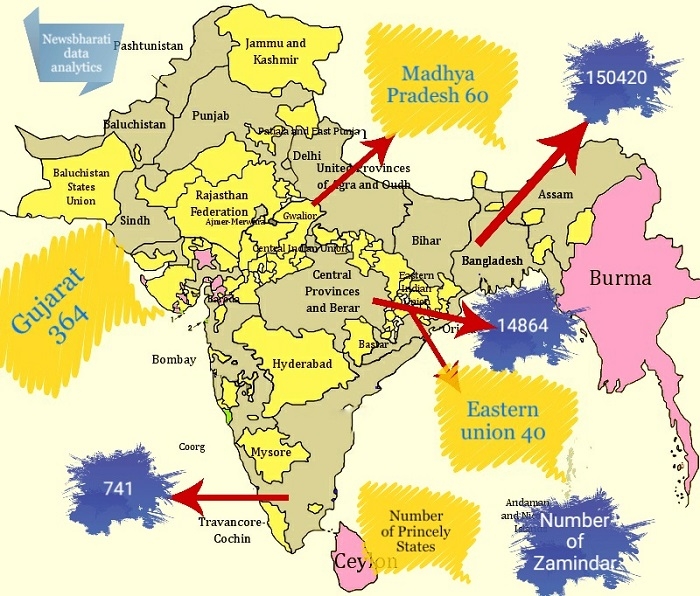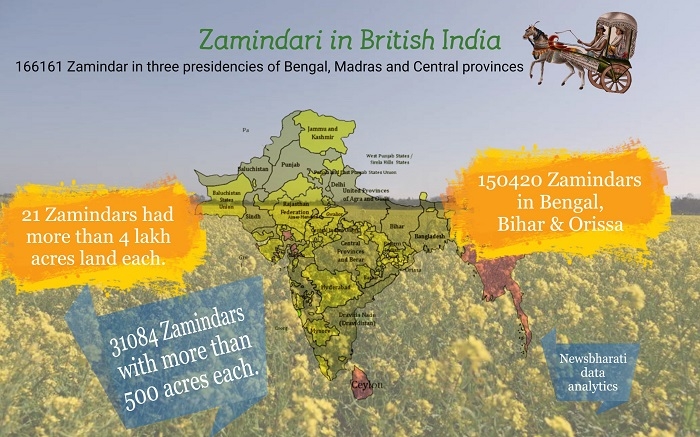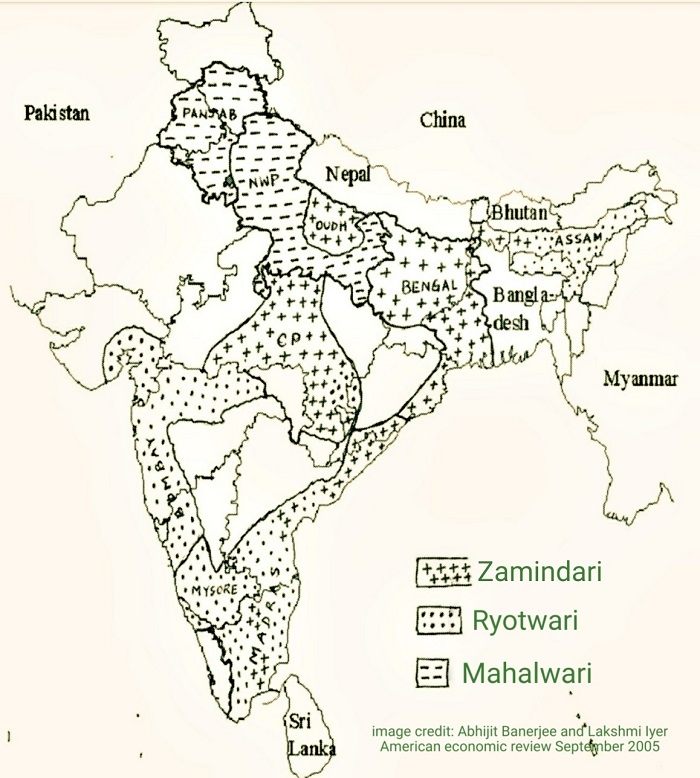The reluctant empire
When British East India Company started territorial acquisitions in Bengal, the board of directors or court of directors as they were called then, was very reluctant. There are many examples of the attitude of the Company and of its servants in initial period with regard to territorial acquisitions.
"Notwithstanding the doubts we had, whether it would be our interest to have the thirty-eight towns, if granted, or whether they might not engage us in quarrels with the Moors,...........for as our business is trade, it is not political for us to be encumbered with much territory."
General Letter of the court of directors, 3rd February 1719.
Again, on 16th February, 1721, the Court of
Directors wrote:
"Remember, we are not fond of much
territory, especially if it lies at a distance from you, or is not pretty near
the waterside, nor indeed of any, unless you have a moral assurance if it will
contribute directly to our real benefit."
When the company aquired the Sanad of Deewani rights, i.e. the right to collect revenue, of what is now Bengal, Bihar and a part of Orissa, they certainly were not dreaming of creating an empire.
the Court of Directors, when first informed of Lord Clive's acceptance on their behalf of the Diwani of the three Provinces, wrote
" We observe the account you give of the powers of the King's Dewan, which in former times was the collection of all the revenues, or, after defraying the expenses of the army and allowing a sufficient fund for the support of the Nizamut, to remit the remainder to Delhi ... This description is not the office we wish to execute."
The Directors had, in fact, expressed their approval of the refusal of the Diwani by Governor Vansittart on a former occasion. Even the belligerent Robert Cilve was apprehensive from the beginning. On the 7th January, 1759, i. e. after two years of Plassey battle, he wrote:
"But so large a sovereignty may possibly be an object too extensive for a mercantile Company; and it is to be feared they are not of themselves able, without the nation's assistance to maintain so wide a dominion;......."
In 1762 Eyre Coote, Carnac( officers of the company army) and three members of Council had prepared to march the English forces to the gates of Delhi, but Clive, referring to this bold plan, wrote afterwards
(September 30, 1765): " My resolution, however, was and will always be to confine our acquisitions, our conquests, our possessions, to Bengal, Behar and Orissa. To go further is in my opinion so extravagantly absurd, no Governor-General, no Council, in these times can ever adopt it unless the whole system of the Company's interest be first entirely remodelled."
But through a series of historical accidents the company went on to create an empire without "remodeling".
The war victories starting with war of buxar in 1764 continued till 1848 when Sikh kingdom of Ranjit Singh was annexed. The problem remained that they were ill prepared to run such an empire. the company recruited people with skills useful to do trade and not to assess land revenue or to maintain law and order. The solution they arrived at gave rise to another aristocracy in India, the 'Zamindari'. Wherever they detected political threat , they annexed the Kingdoms. There they created Zamindars. Wherever politically expedient, they created dependent Princely States. Within 100 years, the Peshwa, Bhosle's of Satara and Nagpur were annexed and merged in due course, the Sindia of Gwalior, Holkar of Indore and Gaikwad of Baroda were retained as Princely States. The Tipu Sultan was defeated but the Mysore kingdom was reverted to Wodiyars, from whom Tipu's father Hyder Ali had usurped the kingdom. Ranjit Singh's kingdom was annexed but his lieutenant Gulab Singh was allowed to retain his Jagir, creating the Princely State of Jammu Kashmir. The Delhi and Oudh were annexed but the Nizam of Hyderabad was retained. A small state like Ramnad was reduced to Zamindari in 1803 and the Zamindar of Benares was 'elevated' to a Prince in 1911.
The following map shows the distribution of Zamindari estates and Princely States.
The Zamindars not only outnumbered the Princely States but quite a few of them were huge in size.
Actually many of them used to be called 'Raja' of their area and behaved like a Prince with their own darbar and seals etc.
However the empire was so large that even the Princely States and Zamindari could not cover it. In the end a haphazard triple structure of Zamindari, ryotwari where company directly taxed the peasants and Mahalwari system where a village or group of villages was an entity for taxation, was created.
The common element was that the empire got richer and people got poorer.
The loot: the British way
For many centuries Indian farmers were accustomed to paying taxes. Since the mughal rule, they were also exposed to local Nawabs, i.e. the middlemen collecting taxes on behalf of Delhi Kingdom. But the tax was always on the actual agricultural produce. It was either 1/6 th or 1/4 th or even 1/3, but of the actual production of that season. With British Zamindari the most important change was that the tax was an amount fixed on the land, irrespective of the famines or low production or natural calamities. Land tax was a source of major income. For example, the net land revenue in the decade between 1871 to 1881, rose from £20,335,678 or nearly half the total net revenue of £42,780,417, by about two millions sterling, to £22,125,807, with a total net revenue of £49,801,664.
The result was a bumper loot for company or the British empire with catastrophic impact on peasants and landless labours. The ' Students manual of the geography of British India' by George Smith, published in 1882 at london for British students mentions
"In 1881, the Bengal Province yielded a gross imperial revenue of £15,088,911, of which at least £12,000,000 is surplus. When in 1765 the East India Company obtained the dewani or virtual sovereignty of Bengal proper, it became receiver of a clear yearly revenue of £1,700,000. From that time till the present the increasing surplus derived from a loyal and prosperous population has enabled the Government of India to conduct the successive campaigns, and raise to the same administrative level the other Provinces and States since conquered or annexed."
Thus the company's revenue from Bengal grew by 700% in 100 years. Poverty of the "loyal and prosperous population" increased in the same proportion. In the twilight period of end of Mughal rule and rise of company rule with neither old or new regime caring for people, in 1770 Bengal famine, an estimated 7 to 10 million people (about 1 Crore) died of hunger. The famines and hunger deaths became a recurring feature of British empire in India till the last famine of 1943 where 3.8 million( 38 lakh) people died in Bengal due to starvation.
The initial loot was indiscreet. Robert Clive took quarter of a million pounds for himself as well as a jagir worth £27,000 a year. later it became institutional. Angus Maddison, a distinguished British economist estimated that by the end of British rule the share of Britishers in India who were 0.06% in population, was 5% of the national income and the share of Zamindar's and Princes estimated to be 0.1 % of population was 3%.
Did the Princely States continued mainly because of the inability of the Company to devour more areas and after 1857 revolt, the British Government's policy of maintaining 'status quo'? This can be a matter of debate for historians. But since they were there, then of course the States needed to be controlled and maximum benefits were to be obtained from such control. How did the East India Company do it? and what was the response of Princes? That is going to be the topic of our upcoming article in the series.






